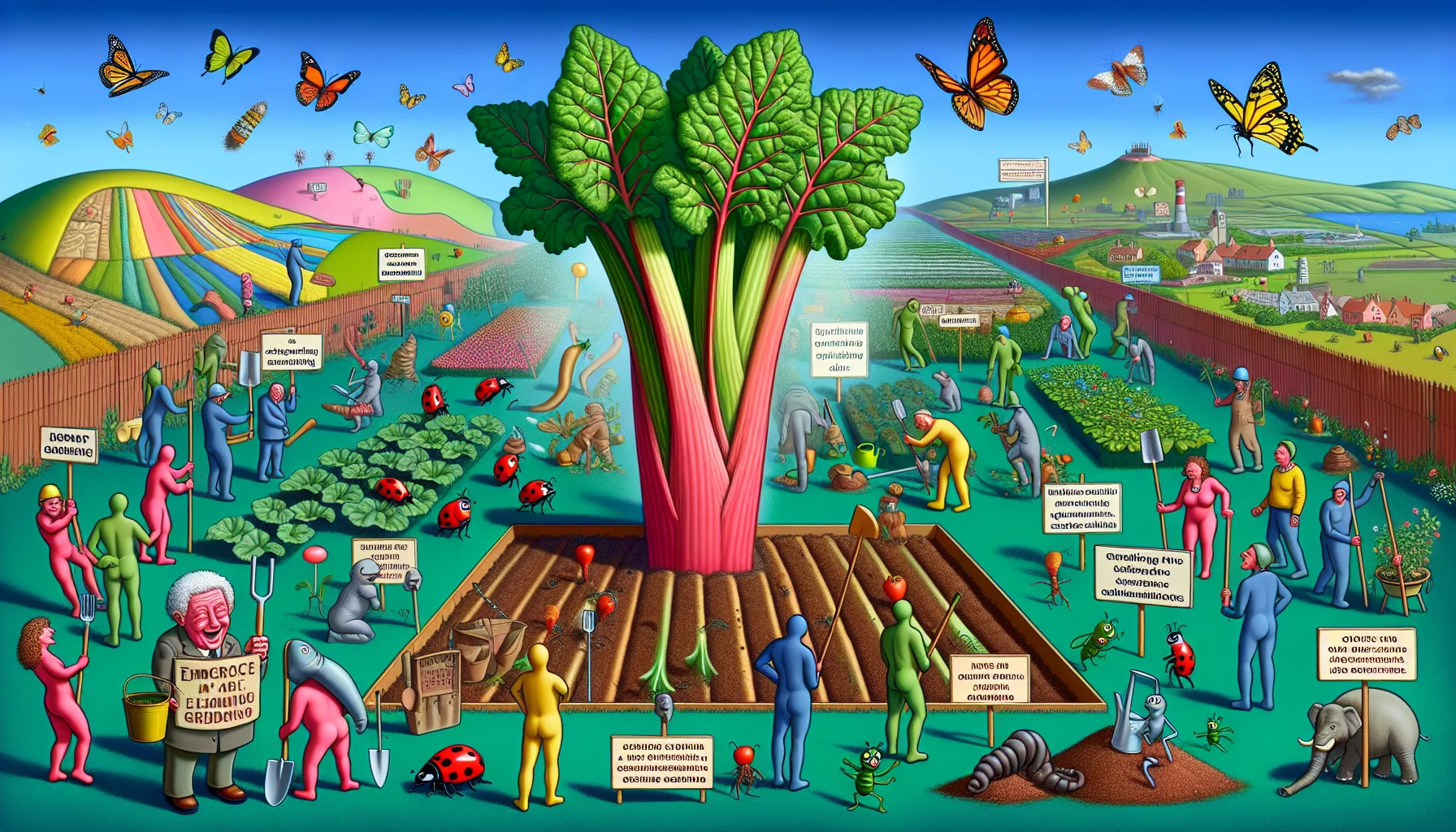Rhubarb growing zones Quiz
Test Your Knowledge
Question of
Understanding Rhubarb Growing Zones
Growing zones, also known as hardiness zones, are geographic areas defined by climatic conditions relevant to plant growth and survival. These zones are crucial for gardeners to understand as they guide which plants can thrive in their local environment. For rhubarb, a perennial vegetable, knowing the appropriate growing zone is particularly important. Rhubarb requires a period of winter chill to stimulate spring growth, making it best suited for zones 3-8. Planting rhubarb in the correct zone ensures healthy growth and a bountiful harvest, as these zones provide the ideal temperature range and winter conditions for rhubarb to thrive.
The Ideal Climate for Rhubarb
Rhubarb thrives in climates where the ground freezes in the winter and thaws in the spring. This perennial plant prefers temperatures that drop below 40°F (4°C) in the winter and then warm up in the spring. The cold period is crucial for rhubarb, as it needs this chilling phase to break dormancy and stimulate spring growth. During the growing season, rhubarb favors temperatures between 75°F (24°C) and 85°F (29°C). It does not perform well in areas with high summer heat or very mild winters without a distinct cold period. Rhubarb's seasonal preference is for a pronounced winter-to-spring transition, making it ideal for cultivation in temperate regions.
Rhubarb Growing Zones in the United States
- Zones 3-4: Suitable for growing, but requires careful management of soil moisture and winter protection.
- Zones 5-7: Optimal growth zones , where rhubarb thrives with minimal intervention.
- Zones 8: Possible to grow with shade and ample water, though not ideal.
Preparing Your Garden for Rhubarb
Planting rhubarb in your garden requires some preparation to ensure a healthy, productive crop. Rhubarb thrives in zones 3-8, making it a versatile plant for many gardeners. Here's how to prepare your garden for rhubarb.
Step 1: Choose the Right Site
Rhubarb plants need plenty of sunlight to grow, so select a site that receives at least 6 hours of direct sunlight daily. Avoid areas that are prone to waterlogging, as rhubarb roots are susceptible to rot in overly wet conditions.
Step 2: Prepare the Soil
Rhubarb prefers well-drained, fertile soil with a pH between 6.0 and 6.8. Work compost or well-rotted manure into the soil to improve fertility and drainage. If your soil is heavy clay, consider raising beds to improve drainage.
Step 3: Space Your Plants
Rhubarb plants can grow quite large, so space them about 3-4 feet apart to ensure they have enough room to mature. This spacing also promotes air circulation, reducing the risk of fungal diseases.
Step 4: Consider Companion Planting
While not necessary, companion planting can help deter pests and diseases. Garlic, onions, and marigolds are good companions for rhubarb, helping to keep away common pests.
Step 5: Mulch and Water
After planting, apply a thick layer of mulch around the base of your rhubarb plants. This will help retain moisture, suppress weeds, and keep the root system cool. Water your rhubarb regularly, especially during dry spells, to ensure consistent moisture.
By following these steps, you can create an ideal environment for growing rhubarb in your garden. With proper care and attention, you'll enjoy a bountiful harvest of fresh rhubarb to use in pies, jams, and other delicious recipes.
Caring for Rhubarb in Different Zones
-
Zone 3-4:
- Watering: Water deeply once a week, ensuring at least one inch of water including rainfall.
- Fertilizing: Apply a balanced 10-10-10 fertilizer in early spring and again when stalks start to form.
- Winter Care: Mulch heavily with straw or leaves after the ground freezes to protect roots.
-
Zone 5-7:
- Watering: Maintain consistent moisture, especially during hot, dry spells.
- Fertilizing: Use a high-nitrogen fertilizer in early spring; compost can be added as a supplement.
- Winter Care: Apply a light mulch after the ground freezes to prevent heaving.
-
Zone 8-9:
- Watering: Increase watering frequency during peak summer heat to prevent bolting.
- Fertilizing: Fertilize in late winter or early spring to encourage vigorous growth.
- Winter Care: In milder climates, little to no mulch is needed, but keep the area weed-free.
Common Challenges in Growing Rhubarb
Growing rhubarb can be a rewarding endeavor for gardeners, but it comes with its own set of challenges that vary depending on the climate and zone. One of the primary concerns is dealing with pests such as rhubarb curculio, a snout beetle that can cause significant damage to the stalks and roots. Diseases like crown rot and rhubarb rust can also hinder growth, often exacerbated by wet conditions or poor soil drainage. Additionally, rhubarb requires a period of cold dormancy to thrive, making it difficult to grow in zones with warmer winters. Understanding these challenges and preparing for them can help gardeners enjoy a successful rhubarb harvest.
Maximizing Rhubarb Yield in Your Zone
| Zone | Yield Potential | Tips for Increasing Yield |
|---|---|---|
| 3-4 | Low-Medium | Apply mulch to protect roots from freeze-thaw cycles; start harvest in second year. |
| 5-6 | Medium-High | Enrich soil with compost; ensure good drainage; avoid harvesting in the first year. |
| 7-8 | Medium | Provide partial shade; use drip irrigation to maintain consistent moisture. |
| 9-10 | Low | Choose heat-tolerant varieties; mulch heavily to keep roots cool; consider container planting for better control. |












